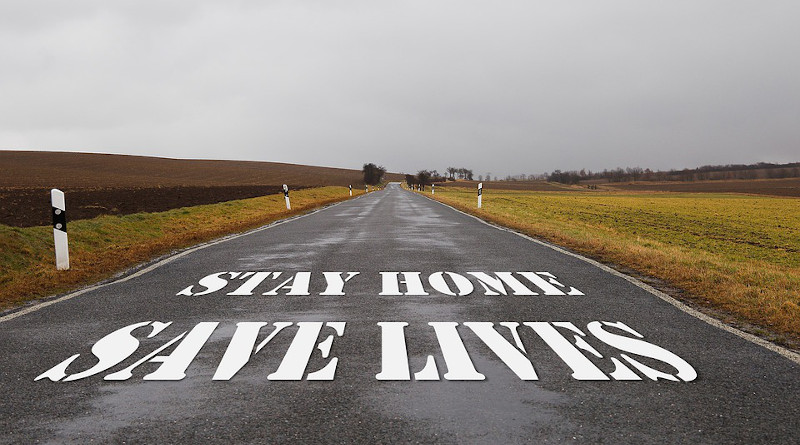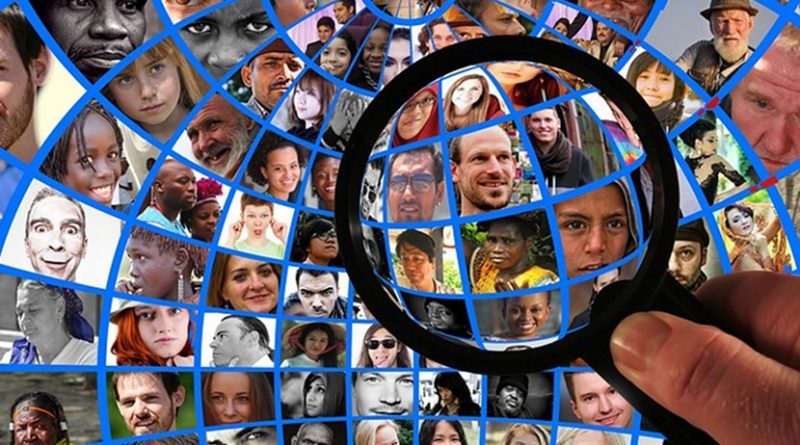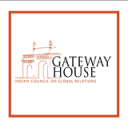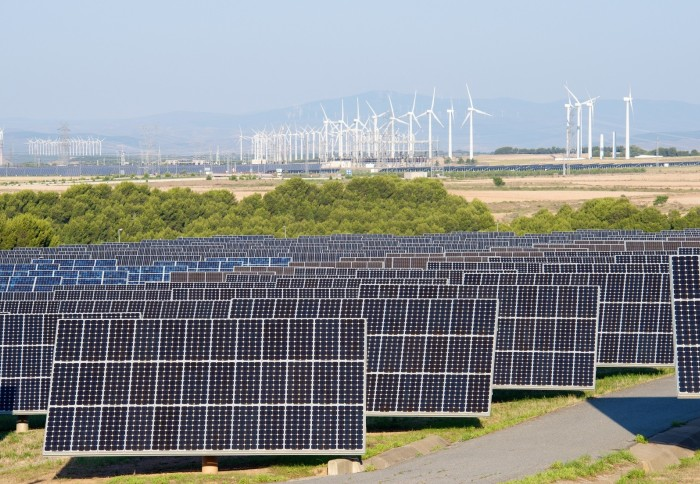Biden called on all governors to issue mask mandates in their states.
13 August 2020,
President attacks Biden’s mask mandate
Former Vice President Joe Biden on Thursday called for immediate mask mandates nationwide for the next three months, keeping the focus on drawing a stark contrast between how he would respond to the pandemic crisis compared to how he says it's been mishandled by President Donald Trump.
Trump fired back at an evening news conference, saying, "We want to have a certain freedom, that's what we’re about."
"He wants the federal government to issue a sweeping new mandate to law-abiding citizens, wants the president of the United States with the mere stroke of a pen to order over 300 million American citizens to wear a mask for a minimum of three straight months," Trump said
Biden, notably, called on governors to issue mask mandates in their states, though Trump said Biden doesn't understand the powers of the president to issue such an order.
"Different states are much different, both in terms of the atmosphere itself and also in terms of the corona problem," Trump continued. "He does not identify what authority the president has to issue such a mandate or how federal law enforcement could possibly enforce it or why we would be stepping on governors throughout our country, many of whom have done a very good job and they know what is needed."
While Biden said he was leaning on health experts in making the call, Trump continued to question the effectiveness of masks, saying "maybe they are just good, maybe they are not so good."
Though Biden has previously supported nationwide mask-wearing, he specified his call in remarks earlier Thursday, saying that every American should wear a mask when they're in public for the next three months "at a minimum" and every governor should make it a mandate immediately.
"Today I want to talk about one thing, very straightforward. It doesn't have anything to do with Democrats, Republicans, or Independents. It has to do with a simple simple proposition," Biden said following a coronavirus briefing with his newly-minted running mate, Sen. Kamala Harris, continuing the main attack line he and Harris started making in their nationwide debut on Wednesday.
It's not lost on the Biden-Harris campaign that it took the president two months to wear a mask in public after he first announced the Centers for Disease Control and Prevention guidance on the practice in a news conference.
"The estimates by the experts are it will save over 40,000 lives in the next three months. 40,000 lives if people act responsibly. And it's not about your rights. It's about your responsibilities as an American," Biden said.
Biden said he hopes the president has "learned the lesson" now that masks save lives but added it's not about politics.
"Look, this is America. Be a patriot. Protect your fellow citizens. Protect your fellow citizens. Step up. Do the right thing. Do the right thing," Biden implored. "So let's institute a mask mandate nationwide, starting immediately."
Harris, speaking after Biden, said the call for a mask mandate "real leadership."
"What real leadership looks like is Joe Biden. To speak up. Sometimes, telling us the stuff that we don't necessarily want to hear, but we need to know," Harris said.
Harris also encouraged the public to keep pressure on the Trump administration for a timeline on a vaccine for COVID-19.
"I think it's important that the American people looking at the election coming up, ask the current occupant of the White House, 'When am I going to get vaccinated?'" she said. "Because there may be some grand gestures offered by the current president, about a vaccine, but it really doesn't matter until you can answer the question."
Heading into the election, the coronavirus is an issue at the top of the ticket for many voters -- and Democrats want to highlight to voters how they say their ticket would handle the deadly pandemic better than the president.
Earlier Thursday, inside a makeshift, television-like studio at a hotel in downtown Wilmington, Delaware, Biden and Harris participated in their first joint COVID-19 briefing with health care experts over a video call as deaths from the virus rise in the United States.
Seated at spaced-out tables that faced one another before a large screen that featured at least four doctors -- at least some of whom have been regularly briefing Biden for the last four months -- the candidates briefly spoke with reporters before their later remarks.
"These are some of the brightest minds, not only in our country but internationally. And as the vice president has been saying since the beginning of this pandemic it should be the public health professionals that are leading policy in our country to address this lethal pandemic," Harris told reporters.
The Biden-Harris campaign presented the event as two briefings in one that will address both the public health crisis and the economic downturn from the pandemic -- with former Federal Reserve Board Chair Janet Yellen appearing as a part of the group briefing the candidates on the economy.
Biden said the briefing focused on the disproportionate impact of COVID-19 on different races and the availability of PPE and testing capacity.
The events come one day after Biden and Harris' first joint appearance as running mates in which the pair slammed Trump's response to the coronavirus crisis.
"This virus has impacted almost every country, but there's a reason it has hit America worse than any other advanced nation. It's because of Trump's failure to take it seriously from the start," Harris said Wednesday, the same day the U.S. reported its highest number of deaths from coronavirus in a single day since mid-May.
Biden called out Trump for touting himself as a dealmaker yet taking to the golf course instead of working across the aisle on a coronavirus relief deal for Americans while negotiations hit an impasse "like every other president has done in a crisis, to get Americans the relief they need and deserve."
Together the two hit on the president's mixed messages on the virus since it arrived on U.S. soil.
Trump continued to hold mega-rallies through June, despite warnings from health care experts to limit group events, especially indoors, due to social distancing concerns, and he largely stopped holding public coronavirus briefings at the end of April, until recently reviving them three months later in late July amid poor polling numbers.
The federal government still largely lacks a national strategy on reopening schools, a point the Biden and Harris campaign are likely to seize on, while Trump continues the push for full in-person instruction.
Harris on Wednesday took a quick swipe at Trump on schools calling the current state over when and how to reopen "complete chaos."
Countdown to Conventions
Both campaigns also have the challenge of delivering acceptance speeches in the time of COVID-19, largely without the pomp and circumstance of previous years.
The Biden campaign confirmed Thursday that Biden and Harris will both give their acceptance speeches for the Democratic National Convention at the Chase Center, a large event space on the waterfront in Wilmington, Delaware.
Trump said he'll deliver his acceptance speech from the White House of the battlefield of Gettysburg, Pennsylvania, despite criticism to both venues.
And in spite of the Democratic National Convention making the move to have all its speakers appear virtually instead of in Milwaukee, Wisconsin, Trump announced he would travel to Wisconsin Monday, the first day of the DNC.
"I'll be there, as a matter of fact, on Monday and many times throughout the campaign and beyond," Trump said on a tele-rally with supporters Wednesday night.
ABC News' Molly Nagle and Averi Harper contributed to this report.
President Donald Trump rejected his rival Joe Biden’s call for a nationwide face mask mandate, saying he trusted elected governors to make science-based decisions about the Covid-19 pandemic that best fit their states.
Biden's approach is "regressive, anti-scientific and very defeatist," Trump said on Thursday during a White House press briefing, accusing the Democrat presidential candidate of hiding in his Delaware basement and wanting the same fate inflicted on all Americans.
The Trump administration is strongly recommending people to wear face masks when social distancing is not practical, but "Americans must have their freedoms,” Trump added.
ALSO ON RT.COMVote Democrat to wear a mask? Biden says Americans must mask up for AT LEAST 3 months as CDC warns of ‘worst fall ever’
Biden called for all governors to mandate the wearing of masks and for “every single American” to wear a mask “for the next three months at a minimum,” during his own press event on Thursday.
Earlier in the day, Centers for Disease Control and Prevention (CDC) director Robert Redfield told WebMD that Americans needed to comply with his agency’s instructions, or face “the worst fall, from a public health perspective, we’ve ever had.”
Neglecting to wear a mask, social distance, wash hands and “be smart about crowds” will cause a 'second wave' of Covid-19, combined with the flu season and colder weather keeping people indoors, Redfield warned.ALSO ON RT.COMFace masks at home: The latest sign that public health officials have lost any sense of perspective
Coronavirus response has become intensely politicized during the election year, with Democrat governors and politicians demanding extended lockdowns and draconian measures while Republican governors and Trump supporting reopenings while maintaining CDC guidelines intended to hinder the spread of the virus.
The use of masks has become another political football, with Democrats insisting people must use them everywhere, even at home, while Republicans rejecting mandates as un-American. Neither side has quoted actual scientific studies on their effectiveness or lack thereof, and the existing body of evidence on the subject is contradictory.
US public health authorities initially advised against wearing face coverings, later admitting this had nothing to do with their effectiveness or lack thereof, but entirely to ensure the adequate supply of protective equipment for healthcare workers.
‘Americans must have their freedoms’: Trump rejects Biden’s call for MASK MANDATE, says states should decide
13 Aug, 2020 22:09
Get short URL

U.S. President Donald Trump speaks during a briefing on the coronavirus disease (COVID-19) pandemic response at the White House in Washington, U.S., August 12, 2020. © REUTERS/Kevin Lamarque
Follow RT https://www.rt.com/usa/497976-trump-biden-mask-mandate-freedom/
13 Aug, 2020 22:09
Get short URL
U.S. President Donald Trump speaks during a briefing on the coronavirus disease (COVID-19) pandemic response at the White House in Washington, U.S., August 12, 2020. © REUTERS/Kevin Lamarque
Follow RT https://www.rt.com/usa/497976-trump-biden-mask-mandate-freedom/
President Donald Trump rejected his rival Joe Biden’s call for a nationwide face mask mandate, saying he trusted elected governors to make science-based decisions about the Covid-19 pandemic that best fit their states.
Biden's approach is "regressive, anti-scientific and very defeatist," Trump said on Thursday during a White House press briefing, accusing the Democrat presidential candidate of hiding in his Delaware basement and wanting the same fate inflicted on all Americans.
The Trump administration is strongly recommending people to wear face masks when social distancing is not practical, but "Americans must have their freedoms,” Trump added.
ALSO ON RT.COMVote Democrat to wear a mask? Biden says Americans must mask up for AT LEAST 3 months as CDC warns of ‘worst fall ever’
Biden called for all governors to mandate the wearing of masks and for “every single American” to wear a mask “for the next three months at a minimum,” during his own press event on Thursday.
Earlier in the day, Centers for Disease Control and Prevention (CDC) director Robert Redfield told WebMD that Americans needed to comply with his agency’s instructions, or face “the worst fall, from a public health perspective, we’ve ever had.”
Neglecting to wear a mask, social distance, wash hands and “be smart about crowds” will cause a 'second wave' of Covid-19, combined with the flu season and colder weather keeping people indoors, Redfield warned.ALSO ON RT.COMFace masks at home: The latest sign that public health officials have lost any sense of perspective
Coronavirus response has become intensely politicized during the election year, with Democrat governors and politicians demanding extended lockdowns and draconian measures while Republican governors and Trump supporting reopenings while maintaining CDC guidelines intended to hinder the spread of the virus.
The use of masks has become another political football, with Democrats insisting people must use them everywhere, even at home, while Republicans rejecting mandates as un-American. Neither side has quoted actual scientific studies on their effectiveness or lack thereof, and the existing body of evidence on the subject is contradictory.
US public health authorities initially advised against wearing face coverings, later admitting this had nothing to do with their effectiveness or lack thereof, but entirely to ensure the adequate supply of protective equipment for healthcare workers.




